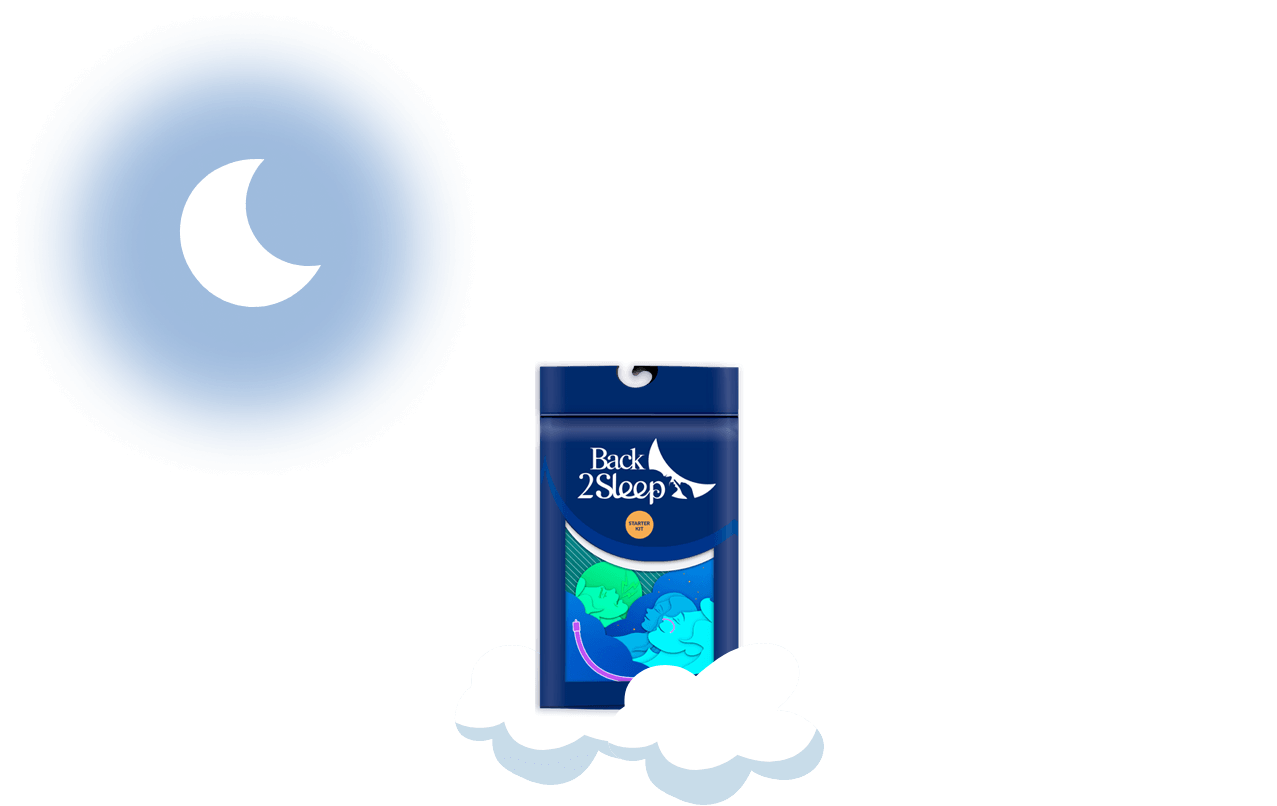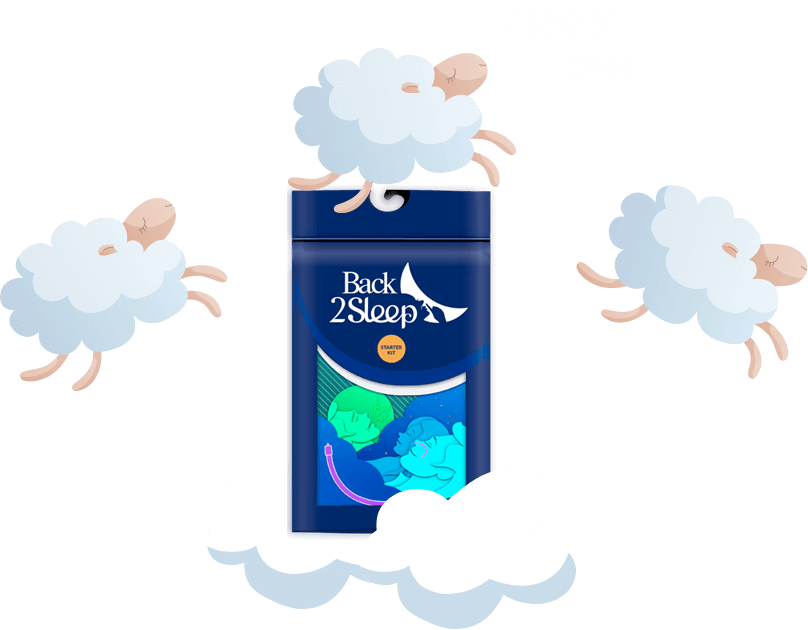How Does the Anti-Snoring Mouthpiece Work? Complete Biomechanical Explanation
Deep dive into mandibular advancement mechanics, airway physics, and why this simple device eliminates snoring from night one
The Mandibular Advancement Device: Simple Design, Sophisticated Physiology
The anti-snoring mouthpiece works through a deceptively simple principle: moving your lower jaw forward while you sleep prevents airway collapse. Yet the underlying biomechanics are elegant and scientifically sophisticated, involving synchronized movements of the mandible, tongue, soft palate, and hyoid bone.
A mandibular advancement device (MAD)—also called a mandibular advancement splint (MAS) or anti-snoring orthosis—is a custom-fitted oral appliance that holds your lower jaw in a forward position throughout the night. This forward positioning accomplishes multiple physiological objectives simultaneously: it stretches pharyngeal tissues, reduces airway compliance (floppy tissue), stabilizes collapsing structures, and fundamentally alters breathing mechanics.
Unlike CPAP machines that force air pressure through obstructed airways, mandibular devices mechanically prevent obstruction from occurring in the first place. This distinction is profound: instead of fighting airway closure with pressure, these devices eliminate the anatomical conditions that cause closure.
Recent clinical research demonstrates 66% average AHI reduction in moderate-to-severe OSA patients using advanced mandibular devices, with compliance rates of 80%+—significantly exceeding CPAP's notorious 20-30% long-term adherence rates.

Understanding Airway Anatomy: Where Obstruction Happens and Why
Before understanding how mandibular devices work, you must grasp normal airway anatomy and what goes wrong during sleep. The pharynx—your throat—is divided into three distinct regions, each vulnerable to collapse:
The Velopharynx (Soft Palate Region)
Located behind your mouth, this is the most common obstruction site in sleep apnea patients (60% of cases). The soft palate, uvula, and surrounding tissue hang freely in this space. During wakefulness, muscle tone maintains patent airways. During sleep, these muscles relax completely, and the soft palate can collapse backward against the pharyngeal wall, partially or completely blocking airflow.
The Oropharynx (Tongue Base Region)
Positioned behind your tongue, this region experiences obstruction in 30-40% of OSA patients. Your tongue's inherent weight and backward positioning during supine sleep cause base-of-tongue obstruction. This is particularly problematic because tongue advancement is less responsive to traditional therapies.
The Hypopharynx (Laryngeal Region)
The lowest pharyngeal segment, this region collapses in 10-20% of severe OSA cases. Multi-level obstruction—simultaneous velopharyngeal + base-of-tongue collapse—occurs in approximately 50% of patients, requiring more aggressive interventions.

The Four Physiological Effects of Mandibular Advancement
🦷 Mandibular Displacement
Device pulls lower jaw forward 5-12mm. This anterior movement stabilizes the mandible, preventing postero-rotation during sleep. Screws or hinges allow titrated advancement—gradual increases optimizing results while minimizing side effects.
👅 Tongue Base Traction
By advancing the mandible (which jaw bone anchors tongue musculature), the entire tongue base moves forward mechanically. This eliminates the most common obstruction site—tongue collapse—without requiring additional muscle effort. Passive mechanical advantage.
🫁 Pharyngeal Wall Tensioning
Mandibular advancement stretches pharyngeal wall tissues, increasing muscular tension and tissue rigidity. This tightening reduces airway compliance—the tendency of floppy tissues to collapse inward during negative pressure breathing.
🦴 Hyoid Bone Elevation
Jaw advancement triggers synchronized hyoid bone movement superiorly and anteriorly. This repositioning of the hyoid—which suspends throat structures—increases overall pharyngeal volume and stabilizes multiple airway segments simultaneously.
Clinical Evidence: Mandibular Device Effectiveness by the Numbers
Two-Piece vs One-Piece Design: Which Mechanism Is Superior?
Mandibular devices exist in two fundamental design categories, each with distinct mechanical advantages and limitations.
Two-Piece (Adjustable) Mandibular Devices
Design: Separate upper and lower gutters connected by screws, hinges, or push rods. The lower component can be gradually advanced relative to the upper via screw-turn mechanism—typically 0.5-1mm increments.
Mechanism of Action: The adjustability allows precise titration—progressively advancing the jaw until snoring resolves and AHI normalizes, while minimizing side effects. This "dose-response" titration is critical: insufficient advancement (under-correction) leaves obstruction untreated; excessive advancement causes jaw pain, TMJ dysfunction, and bite changes.
Advantages:
- Customizable advancement - Each patient receives optimal jaw position
- Reduced side effects - Lower adjustment produces fewer complications
- Efficacy optimization - Incremental increases maximize AHI reduction
- Mouth opening preservation - Hinge design allows speech, eating normally
Disadvantages:
- More expensive (€300-500 custom vs €50-100 ready-made)
- Requires dental professional fitting and adjustment visits
- More complex maintenance and cleaning
- Mechanical wear on adjustment screws over time
One-Piece (Monobloc/Fixed Advancement) Devices
Design: Rigid single-piece construction where upper and lower components are permanently joined at predetermined advancement angle (typically 8-12mm).
Mechanism of Action: The fixed advancement provides consistent jaw positioning without adjustment capability. Monobloc devices rely on mechanical rigidity—the device physically cannot allow backward mandibular movement, so airway patency is maintained through perpetual forward positioning.
Advantages:
- Lower cost - No adjustment mechanism complexity
- Simpler fabrication - Ready-to-use "boil and bite" options available
- Durability - No mechanical parts to wear or break
- Minimal maintenance - Clean like standard mouthguard
Disadvantages:
- One-size approach - Not customized to individual anatomy
- Over-advancement risk - Pre-set advancement may exceed optimal
- Reduced efficacy - 40-50% lower success rate than adjustable devices
- Adaptation difficulty - Excessive initial jaw discomfort common
- Side effects - Higher rates of TMJ pain, tooth movement
Clinical Recommendation: Adjustable two-piece devices are superior for OSA treatment. The titration capability allows precise airway optimization while minimizing complications. Studies show adjustable devices produce 70-75% AHI reduction versus 40-50% for fixed monobloc designs.

How Titration Works: The Step-by-Step Millimeter Advancement Process
Titration is the cornerstone of effective mandibular device therapy. This controlled advancement process uses evidence-based methodology to determine each patient's optimal jaw position.
The Clinical Titration Protocol
Initial Fit
Device fabricated with jaw at minimal advancement (2-3mm). Patient sleeps 2-3 nights evaluating comfort and initial symptom response.
First Adjustment
Advancement increased 0.5-1mm via screw mechanism. Patient reports snoring reduction, sleep quality, daytime fatigue levels. Sleep study (HSAT) often performed.
Iterative Titration
Process repeats—0.5-1mm advances every 2-4 weeks—until clinical endpoints achieved: snoring eliminated, daytime sleepiness resolved, AHI <5 events/hour.
Optimal Position
Final advancement typically 7-10mm. Research shows >75% of maximum protrusion produces best outcomes while minimizing side effects.
The Dose-Response Relationship: More advancement does not automatically mean better results. Clinical studies reveal an inverted-U curve: moderate advancement (8-10mm) produces optimal AHI reduction with minimal complications. Excessive advancement (>12mm) increases TMJ pain, tooth movement risk, and side effects without proportional therapeutic gain.
Research Finding: Randomized controlled trials document that titration using 0.75mm increments optimizes outcomes better than larger jumps, with patients reaching therapeutic goals in 8-12 weeks versus 16-20 weeks with 1.5mm increments.
Discuss Personalized Titration ProtocolThe Physics of Airway Patency: Why Mandibular Advancement Prevents Collapse
Understanding why mandibular devices work requires grasping the physics of airway collapse. Your pharynx isn't a rigid tube like your trachea—it's a collapsible structure surrounded by muscles and soft tissue.
The Bernoulli Principle and Airway Dynamics
During sleep apnea, negative pressure breathing creates conditions for airway collapse. When you inhale, muscles create negative pressure inside your pharynx, pulling air inward. During sleep, weakened pharyngeal muscles cannot counteract this negative pressure, so the airway collapses like a drinking straw being sucked.
Mandibular advancement addresses this through four biomechanical strategies:
1. Increased Cross-Sectional Area
Mandibular advancement increases pharyngeal cross-sectional area by approximately 30-50% (measured via CT imaging). A larger airway has exponentially greater resistance to collapse. According to fluid dynamics principles, airway collapse risk decreases with the fourth power of diameter changes—meaning small area increases produce dramatic collapse reduction.
2. Increased Airway Rigidity
The device stretches pharyngeal walls, increasing muscle tension and tissue stiffness. This increased "airway compliance" makes collapse mechanically harder. Rigid structures resist negative pressure forces more effectively than flabby tissues.
3. Tongue Base Repositioning
Moving the jaw forward directly advances the tongue base (which anchors to mandible), eliminating the most common obstruction site. Studies show tongue base obstruction affects 60-70% of OSA patients—mandibular devices directly address this mechanism.
4. Hyoid Bone Stabilization
The hyoid bone—which suspends pharyngeal structures—moves superiorly and anteriorly with mandibular advancement. This stabilization prevents the postero-rotation and descent of pharyngeal structures during sleep, maintaining structural relationships that preserve airway patency.
Physical Principle: Mandibular advancement exploits anatomical leverage, using the jaw-tongue connection to passively maintain airway size and rigidity during sleep. No ongoing muscle effort is required—the device's mechanical design maintains patency perpetually.
Comprehensive Mechanism Comparison: Mandibular Devices vs Alternatives
| Treatment | Primary Mechanism | Airway Size Change | Muscle Effort Required | AHI Reduction |
|---|---|---|---|---|
| Mandibular Device | Passive jaw/tongue advancement + pharyngeal tensioning | +30-50% cross-sectional area | Minimal (passive mechanical) | 60-75% |
| CPAP Machine | Air pressure pneumatically stents airway open | Maintains existing lumen | High (must tolerate pressure) | 90-95% |
| Nasal Stent (Back2Sleep) | Mechanical splinting of nasal passages + soft palate | +20-40% nasal area | None | 50-70% (mild-mod OSA) |
| Positional Therapy | Gravity-based tongue repositioning via side-sleeping | +15-30% gravity-assisted | Conscious repositioning | 20-40% (positional OSA only) |
| Surgical Intervention | Tissue removal or structural modification | +40-60% (if successful) | N/A (permanent) | 40-70% (variable) |
Why Mandibular Devices Achieve Superior Clinical Outcomes
Zero surgery, no medications, no air pressure tolerance required. Passive mechanical device achieves 66% average AHI reduction using only jaw positioning.
Clinical improvement often evident within 3-5 days (vs 4-8 weeks CPAP adjustment). Early success drives compliance—patients use devices they experience working.
Titration protocol allows optimization for each patient's specific anatomy, collapse pattern, and tolerance. No one-size-fits-all limitations.
Long-term studies show mandibular devices produce durable AHI reduction, blood pressure improvement, and cardiovascular risk reduction comparable to CPAP.
Clinical Case Studies: How Mandibular Advancement Changed Lives
"I wore CPAP for 4 years—never adapted, slept in separate room to escape noise. Dentist recommended mandibular device. After 2 weeks titration, AHI dropped from 28 to 4 events/hour. My wife moved back. No more mask, no noise, no complaints. Sleeping 8 hours straight for the first time in years."
"Diagnosed with moderate OSA. Doctor said CPAP or surgery. Sleep specialist fitted mandibular device with titration plan. We advanced 0.5mm monthly. After 3 months: AHI normalized (5 events/hour), blood pressure dropped 12 mmHg, daytime energy restored. No side effects. This literally saved my life without surgery."
"Young professional, travel constantly for work. CPAP was impossible—luggage weight, hotel outlets, noise complaints. Mandibular device fits in jacket pocket. Works on planes, trains, hotels. AHI reduced 70% without lifestyle disruption. Finally sleeping normally while maintaining my career."
"Age 68, skeptical of new devices. CPAP failed after 2 weeks. Dentist said mandibular device might work—explained the mechanism thoroughly. After 1 month, snoring eliminated, wife happier than in 15 years. Device comfortable, no pain. Wishing I'd tried this before CPAP's years of suffering."
Expected Adaptation Effects and Evidence-Based Management Strategies
Mandibular devices work mechanically by changing jaw position—predictable side effects accompany this repositioning. Understanding these effects and management strategies improves long-term success.
Common Adaptation Effects (Usually Resolve 1-4 Weeks)
Temporomandibular joint (TMJ) adapted to new position experiences mild pain initially. Management: Wear device only at bedtime first week; advance gradually. Naproxen 500mg before bed helps adaptation-phase discomfort.
Forward jaw position slightly changes saliva distribution. Management: Temporary effect resolving within 5-7 days. Sleep on side to prevent drooling during adaptation.
Forward jaw positioning alters airflow pattern initially. Management: Use bedroom humidifier. Sip water before bed. Usually resolves as breathing stabilizes.
Device pressure against teeth and gums. Management: Ensure proper fit by dentist. Use sensitive-tooth toothpaste. Discomfort resolves within 2 weeks as tissues adapt.
Long-Term Considerations (Months-Years)
Bite Changes: Long-term mandibular device use can cause minor dental changes (0.5-1mm) affecting bite after 2-3 years. Management: Annual dental checkups document changes. Orthodontic refinement rarely necessary. Clinical benefits vastly outweigh minor bite changes for most patients.
TMJ Dysfunction (Rare): <5% of patients develop persistent TMJ pain with excessive advancement. Prevention: Proper titration protocol limiting advancement to 75% of maximum protrusion. If occurs, reduction of advancement 1-2mm usually resolves pain completely.
Device Durability: Mandibular devices last 2-3 years with proper care, requiring replacement or relines approximately 0.8 times annually. Cost is minimal compared to CPAP supplies replacement.
Learn About Device Maintenance & CareMandibular Device Candidacy: Who Benefits Most from This Mechanism?
Mandibular device effectiveness varies by patient factors. Clinical research identifies specific phenotypes predicting excellent outcomes:
| Patient Factor | Excellent Candidates | Variable Candidates | Poor Candidates |
|---|---|---|---|
| OSA Severity | Mild-moderate (AHI 5-30) | Moderate-severe (AHI 30-60) | Severe (AHI >60) |
| Collapse Pattern | Retroglossus (tongue) obstruction | Mixed (multiple sites) | Oronasal/complete collapse |
| Body Position | Positional apnea (supine only) | Moderate positional component | Non-positional (any position) |
| Dental Status | Healthy dentition, good periodontal health | Minor dental issues | Severe periodontal disease, missing teeth |
| TMJ Status | No TMJ dysfunction history | Mild TMJ symptoms | Severe TMJ arthritis, pain |
| Age/Skeletal Class | Class II (recessed mandible) | Class I (normal) | Class III (protruding mandible) |
Prediction Tool Research: A 2024 meta-analysis identified key predictors: patients with retroglossus-predominant collapse, lower baseline AHI, and younger age show 75-80% treatment success rates. Conversely, patients with multi-level obstruction, severe obesity, and older age experience 40-50% success.
Advanced Phenotyping: Drug-induced sleep endoscopy (DISE)—where physicians visualize airway collapse patterns during induced sleep—predicts mandibular device response with 85% accuracy. Patients with collapse patterns showing responsiveness to jaw advancement show excellent outcomes; those with fixed obstruction patterns show poor response.
2025 and Beyond: Next-Generation Mandibular Device Innovations
The mandibular device field is evolving rapidly, with several innovations enhancing mechanism efficacy:
Smart Mandibular Devices with Sensor Integration
Emerging devices incorporate embedded sensors measuring jaw position, snoring intensity, and breathing patterns nightly. Real-time data uploads to smartphone apps, allowing dentists to optimize titration without multiple office visits. Predictive algorithms suggest adjustment timing based on outcome trending.
Combination Therapy Optimization
Clinical research increasingly supports combining mandibular devices with nasal stent technology (like Back2Sleep) for synergistic effects. Nasal stent eliminates nasal obstruction (30-50% of airway resistance) while mandibular device handles velopharyngeal collapse. Preliminary data suggests this combination achieves 85%+ AHI reduction in moderate-severe OSA.
Magnetic Mandibular Devices
Prototype devices use biocompatible magnets to maintain jaw positioning, eliminating mechanical screws. Advantages: improved comfort, reduced adjustment irritation, simpler maintenance. FDA trials ongoing; expected market availability 2026.
Machine Learning Prediction Models
AI algorithms analyzing patient CT scans, sleep study data, and anatomical features now predict mandibular device response with 90%+ accuracy before treatment initiation. This enables patient pre-screening, reserving devices for high-responder phenotypes while suggesting alternative therapies for predicted non-responders.

Frequently Asked Questions: Mandibular Device Mechanism & Efficacy
Q: How quickly does a mandibular device work?
A: Unlike CPAP (4-8 week adjustment), mandibular devices often show efficacy within 1-2 nights. The mechanical advancement immediately increases airway size and reduces collapse risk. However, optimal therapeutic benefit develops over 3-5 weeks as tissue adaptation and muscle conditioning occurs.
Q: Can I lose my bite from long-term mandibular device use?
A: Minor bite changes (0.5-1mm) occur in 10-15% of long-term users after 2-3 years. These changes are reversible upon device discontinuation and rarely affect function or require correction. Annual dental monitoring documents changes. Compared to untreated sleep apnea's cardiovascular risks, minor bite adjustments are clinically insignificant.
Q: Why is titration so important to the mechanism?
A: Titration optimizes the "dose-response" relationship. Insufficient advancement leaves obstruction untreated; excessive advancement causes side effects without proportional benefit. Research shows optimal advancement occurs at 70-75% of maximum protrusion. Titration protocol ensures each patient reaches this sweet spot.
Q: Can mandibular devices work for severe sleep apnea (AHI >60)?
A: Traditional mandibular devices alone show limited efficacy in severe OSA—typically 40-50% AHI reduction. However, recent 2024 data shows combination therapy (mandibular device + nasal stent) or newer high-advancement devices achieve 65-70% reduction in severe cases. For intolerant patients, this combination is life-changing even if not achieving complete normalization.
Q: How does mandibular advancement compare to CPAP long-term?
A: CPAP achieves superior AHI reduction (95-99%) but suffers 70-80% discontinuation rates. Mandibular devices achieve 66-75% AHI reduction with 80%+ compliance. Long-term quality-of-life improvements are equivalent—blood pressure reduction, daytime sleepiness improvement, and cardiovascular risk reduction are similar, reflecting that consistent usage of moderately effective treatment equals inconsistent usage of highly effective treatment.
Schedule Consultation with Sleep SpecialistThe Future of Sleep Apnea Treatment: Mandibular Devices Leading the Way
The mandibular advancement device represents a paradigm shift in sleep medicine: moving from force-based (CPAP pressure) to anatomy-based (mechanical repositioning) treatment. By understanding the underlying biomechanics—how jaw advancement increases airway size, stretches pharyngeal tissue, repositions the tongue, and stabilizes structural relationships—we appreciate why these simple devices achieve transformative clinical results.
"Effective medical treatment isn't always complex. Sometimes it's elegant simplicity: moving your jaw forward prevents airway collapse. Nature handles the rest."
Discover Your Optimal Sleep Solution Learn About Complete OSA Treatment Options







